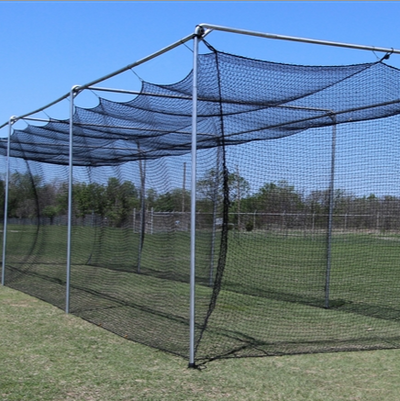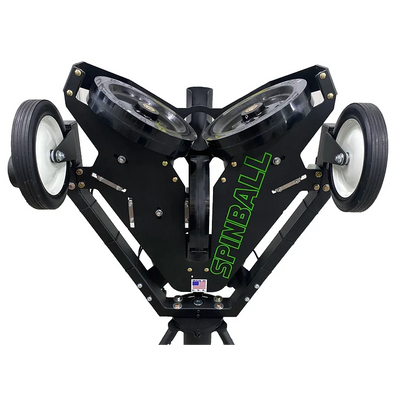Editor's Note: This article is an excerpt from Chapter 8 on Picks from Coaching the Beginning Pitcher, an excellent book by Dan Keller.
Few situations benefit more from a “free” out than one with runners on first and third bases. A properly executed third-to-first pickoff move can help kill an offensive rally and get a pitcher out of a jam. This move is the most advanced of the picks described thus far and requires patience and understanding on the part of both athlete and coach. In baseball circles, this move is often referred to as a 31 (“thirty-one”) move.
A third-to-first move involves starting a move to third base, then spinning and attempting to pick off the runner at first base. While a pitcher cannot fake a throw to first base without stepping off the rubber, he can fake a throw to third base. A pitcher does not have to throw when moving toward third base and therefore is allowed to stop an initial move to third and then throw to first. The physical actions of a proper third-to-first pickoff move follow:
1. Up – The leg lift moves up to the balance point.
2. Down – The leg lift begins to move down from the balance point.
- A 45-degree step toward third base is taken, with the body drifting toward home (key #1) as much as possible.
- The shoulders stay square to first base, with the pitcher’s jersey number facing the first base runner (key #2).
- The hands separate to show the baseball (key #3).
3. Push/Bounce
- The lift foot lands and pushes off immediately (key #4).
- The body turns in the air to get into throwing position toward first base.
4. Right – The right foot lands opening up toward first base.
5. Left – The left foot lands lined up to throw.
6. Throw – An aggressive release is followed by an accurate throw.
Coaching the Third-to-First Move
The goal of a third-to-first move is to get an out at first base, a point that must be understood by all pitchers. As with the inside turn pick at second base, a 31 move relies upon deception. Therefore, the pitcher’s job is to fool the first base runner (not the third base runner). The first base runner must believe the pitcher is going home. Four coachable keys help to fool the first base runner and make the third-to-first move an effective pickoff:
Key #1 – Show a Body Drift
The first piece of deceiving the first base runner is a showing a drift toward home plate. Along with maintaining vision of the pitcher’s numbers, a runner needs to see the body sway in the direction of home plate. This way, he believes that the pitcher is in fact throwing home.
After the pitcher lifts his leg, the next movement is to step toward third base and begin the pickoff. Baseball rules require that the landing foot must move at least 45 degrees toward third at landing. It is the pitcher’s goal to keep the body moving toward the plate as much as possible while the foot reaches out more in the direction of third base. Remember, while an umpire will see the foot move toward the third base line, the first base runner’s view makes it difficult to see where a pitcher’s foot actually lands.
Key #2 – Keep the Jersey Numbers Facing the Runner
A good runner at first base retreats to the bag as soon as a pitcher’s shoulders turn to throw, or fake, the baseball to third base. From the first base runner’s point of view, when the shoulders turn, the numbers on the back of the jersey turn away as well. Therefore, instruct pitchers to keep their numbers facing the first base runner up until turning to throw to first.
Keeping the shoulders square to first base takes discipline and practice. At first, the shoulders will turn naturally in preparation for a potential throw to third base. This is where the true understanding of the big picture comes into play.
Really, there is no need to fake the runner at third base back to the bag. Instead, the entire focus of the play is to deceive the runner at first base. So, athletes need to understand the importance of holding their shoulders
still so that the body does not twist to give away the play. Remember, the first base runner needs to believe that the pitcher is throwing home. Keeping the numbers facing him will do just that!
Key #3 – Show the Baseball
As with a normal pitch to the plate, the hands must break as the leg lowers out of the balance point. Also consistent with the inside turn move to second base, the hands will break but will not reach the full extended throwing position. Instead, the hand moves down and out of the glove only to be pulled to the ear for a quick throw to first base.
Do not fake a throw to third. The throwing hand breaks from the glove, then moves down and away from the body. From the first base runner’s perspective, the hand is moving back and preparing to deliver a pitch home. He has no reason not to believe the pitcher is throwing home. If the shoulders turn or if the hand fakes to third, the runner immediately retreats back to first base.
Key #4 – Push Off Immediately After Landing the Lift Leg
Up to this point, the leg has lifted and moved 45 degrees in the direction of third base. The body has drifted toward home plate - not in the direction of third. By choice, the body has remained centered over the mound, so much so that if the pitcher does not push off of the lift leg when it lands, he would fall out of balance and end up on the dirt. From the first base runner’s perspective, the shoulders have remained square and the body has shown a slide toward home plate — both indications of a pitch home.
As the foot touches the dirt, the entire body must push off the lift leg in the direction of first base. If the move is executed correctly, the left foot lands and immediately pushes off so that both feet are temporarily in the air. The body turns in the air (toward the throwing position) and the throwing hand moves up in preparation to release. After bouncing, the right foot lands, then the left lands, and a quick throw follows (right-left-throw).
Only the left foot should move toward third base! Young pitchers have a tendency to step toward third with their left foot, then also step with their right foot using it to pivot and turn toward first. This is inefficient and will give the first base runner time to get back to the bag. Make sure your pitcher steps only with the left foot and immediately pushes off toward first base!
Coaching Notes
Stay Aggressive (All Picks) - A runner needs only a split second to recognize a pickoff move and dive back to a base. Any hint of hesitation in a pitcher’s move can provide just enough time to get back safely, even if the runner had been initially fooled. Therefore, when picking to any base, a pitcher should be thinking: Throw, throw, throw… stop! This means, “When you pick, you throw!”…unless there is some outstanding circumstance that requires stopping the throw.
Avoid Hesitation - Pitchers should never check to see if they have a runner picked off, and then try and make a throw. If a pitcher is not ready to throw the ball when picking, every runner (fooled or not) has plenty of time to return to the bag safely. Think “throw” first and adjust if necessary.
Know When to Throw - Remember that without stepping off of the rubber, any pick to first base MUST involve a throw to first. Picks to second or third base, on the other hand, do not mandate a throw. Therefore, if a pitcher executes a proper inside turn move, for example, and the second base runner breaks for third, the pitcher should obviously stop his motion and deliver the baseball to third base to get the out.
---
ABOUT THE AUTHOR
Dan Keller is a former full-scholarship, all-american pitcher for UCLA drafted by the Baltimore Orioles. He has experience providing over 10,000 pitching lessons, and has been a successful pitching instructor since 1999. A talented speaker and gifted writer, he has spoken to coaching groups across the country and has been published in newspaper, magazine and online media. Keller’s students span from first-graders to first-rounders, and his Lifeletics Baseball Academy successfully operates team and individual training lessons, seasonal camps and clinics, success seminars, and pitching-specific programs.
Dan is the author of Coaching the Beginning Pitcher, a complete coaching reference to pitching mechanics, arm care, pick-offs, mound presence, mental strategy, common flaws and fundamental drills. Check it out today!







